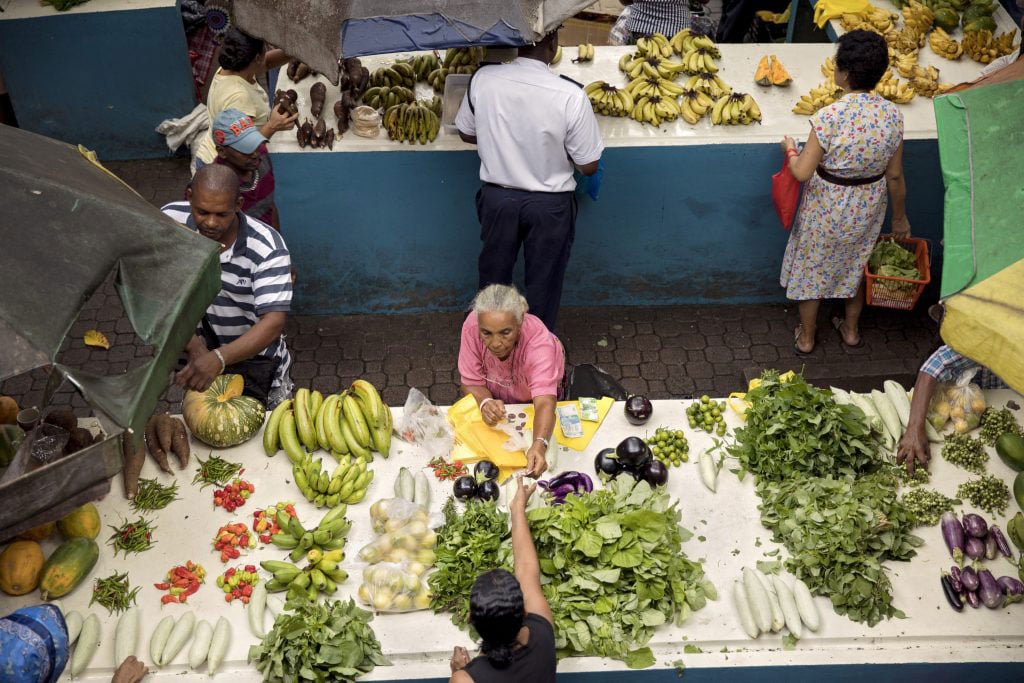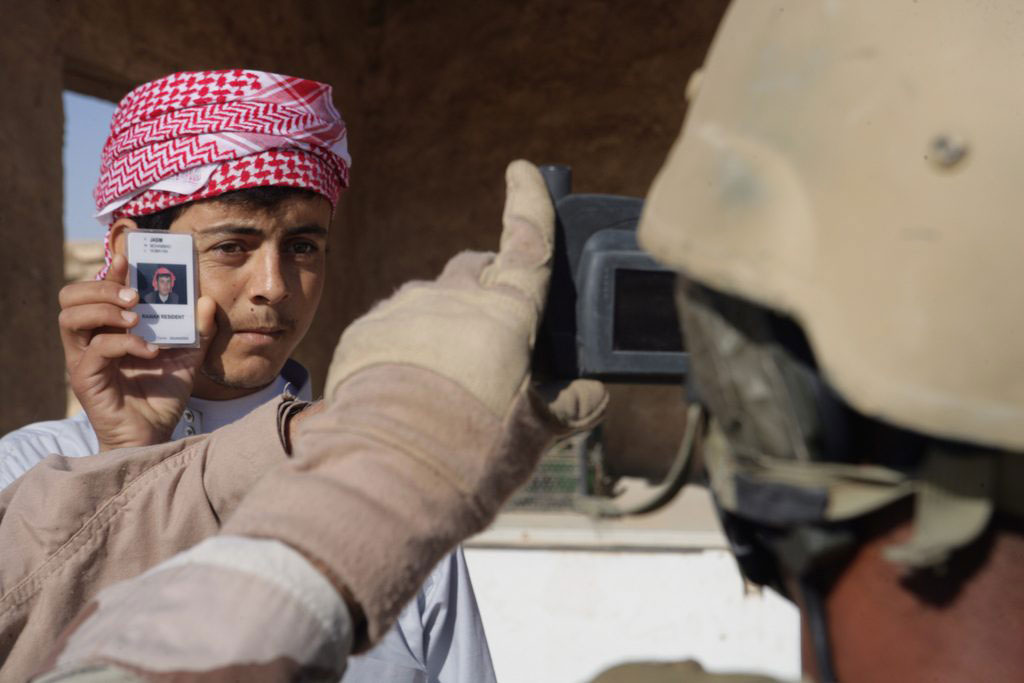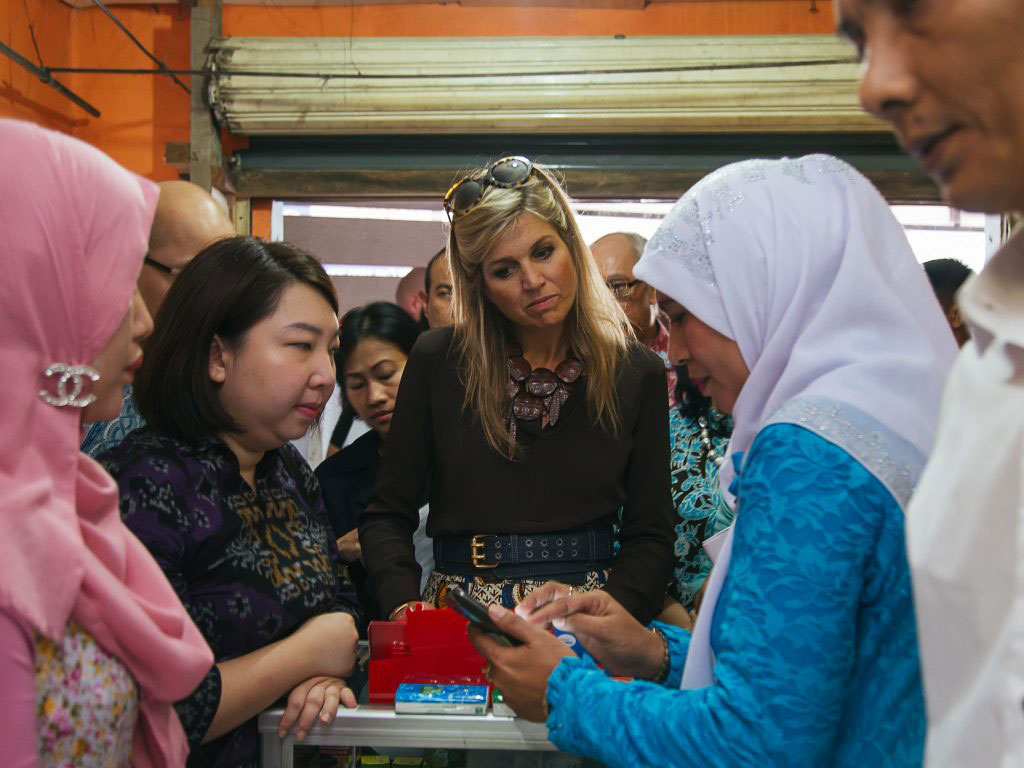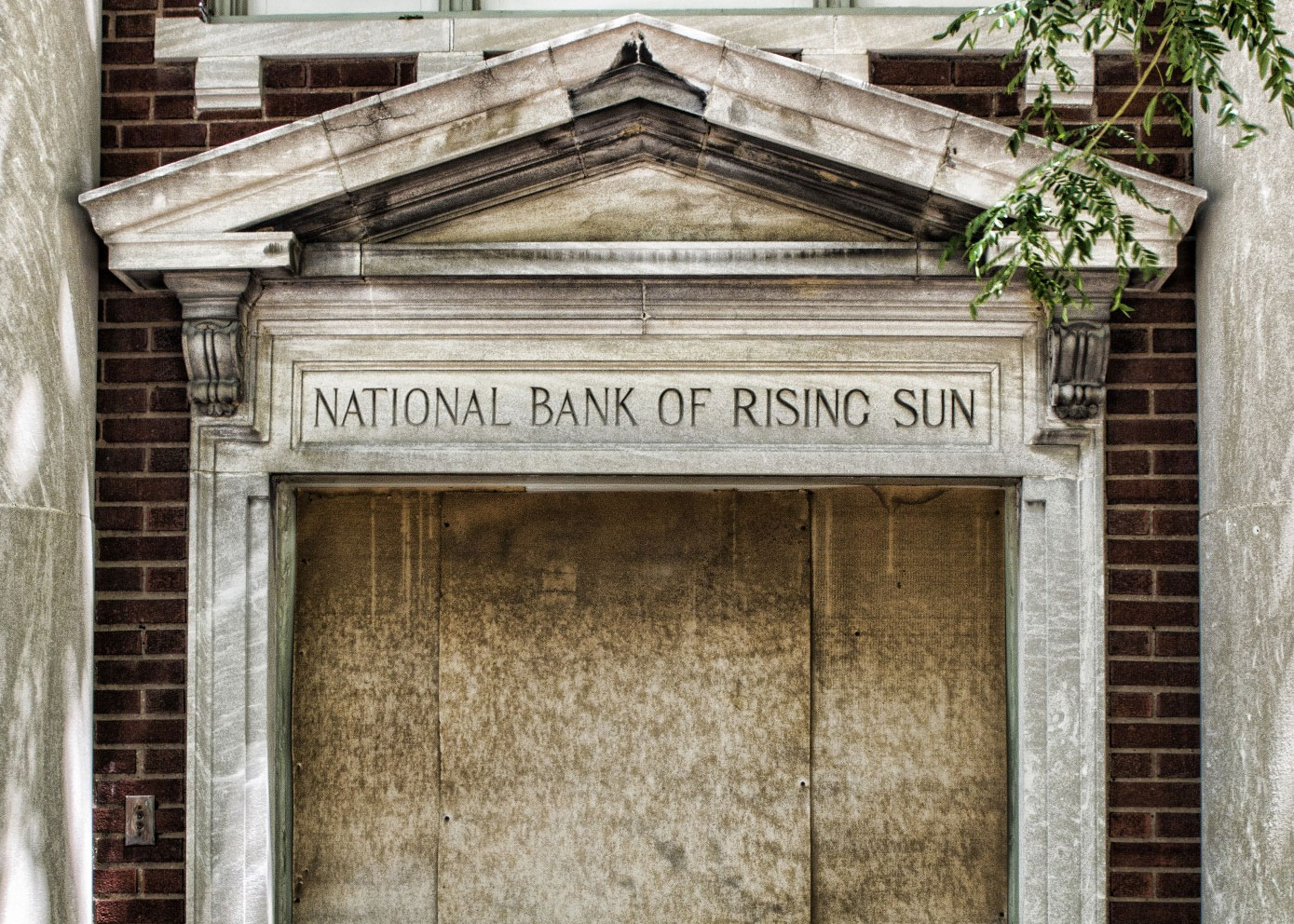A slow-moving phenomenon is unfolding all over the world. It will have serious consequences, but very few people are consciously aware of it, perhaps because it involves something seemingly banal and benign: the spread of digital payments. This phenomenon is not only occurring in the major cities of economically advanced nations, but also in poorer countries, often promoted via the “financial inclusion” programs of international development organizations in partnership with major financial institutions.
The rise of digital payment (sometimes going under names like “e-money”, “plastic money” or “mobile money”), and the associated phasing out of physical cash, gives financial institutions and governments a new means of financial monitoring and control on an unprecedented scale. As I will argue, this can be seen as the gentrification of payments.
The term “gentrification” usually refers to the neighborhood process in which a marginalized community — often characterized by informal economic networks, street markets and a rough edgy vibe — finds their environment gradually diluted by the influx of wealthier newcomers who price them out and use their community as the setting for new formal markets.

The process sets in motion a “cleansing” of informality, in which the newcomers, who are attracted to certain desirable appearances of the community (such as the music or the fun atmosphere), eliminate the threatening elements that accompany the original precarity (the gangs, the drug dealers, the rough markets).
A process of neighborhood gentrification culminates with a hollowing out of the original community, the neutralization of the risk that it represents to wealthier people, and the rise of an nonthreatening simulacrum of that community backed by elite business owners and large-scale institutions.
It may begin with hipster clothing boutiques replacing the small-scale fabric merchants, but inevitably it is completed with the appearance of corporate chain-stores that replace everything from family-owned delis to religious community centers.
When we stand back and generalize, though, “gentrification” simply appears as the process in which informal and unpredictable community networks that are potentially threatening to mainstream business interests are replaced by formal, standardized and predictable state–corporate structures, accompanied by superficial appearances of “niceness”, “coolness” and convenience. The figure of the “consumer” seeking a “buying experience” from a shopping mall replaces the community member seeking belonging within networks of friends, family and associates.
How does this relate to payments? Cash is a form of payment long associated with those on the lower rungs of post-colonial informal economies — the fish market in Maputo, the back-street hairdresser in Mumbai, or the Andean craft merchant — issued by states but easily taken out of their view and direct control. Digital payment, however, is the domain of large-scale globalized financial corporations, and cannot be separated from them or taken out of their view. To use — or to be forced to use — digital payments is to enter their sphere of influence and power.

In all gentrification processes, those who are dispossessed support themselves through informal structures, or gain a sense of identity, meaning and belonging from using those structures. From the perspective of large-scale institutions, however, such people are often implicitly seen as backward, even criminal, seeking to escape the gaze of benevolent and responsible institutions that they would be better off with.
The financial inclusion community — which aims to bring formal financial services to people without access to formal finance — likes to present itself as a force for social empowerment, but it often appears closely allied to the interests of big finance and big tech. A simple search on Google images for the term “financial inclusion Africa” reveals countless promotional images of rural women smiling into the screen of their mobile phones, looking at an app produced by a distant group of men in some large city, and tethered to a corporate datacenter that monitors and tracks their actions in order to seek out opportunities for institutional profit.
The Technicalities of Payment
To grapple with this, we must first explore the basics. Every day modern market economies are host to countless instances of one basic social interaction. Two people meet in a market setting. One of them hands over something specific and immediate — like bananas, or a manufactured toaster, or a particular service — and the other hands over something general and future-oriented — money tokens that give access to a range of potential goods and services from others in future.
Zoom out, and we can see a giant interdependent network of people and firms moving real goods and services in one direction in exchange for money tokens in the other. We are all enmeshed within, and dependent upon, these monetary market networks.
Most people use national currencies, money tokens that work only within a particular geographic area. These national currencies come in two basic forms. First, there is cash, physical tokens issued by state-backed institutions like central banks and government treasuries. Then there are digital bank deposits, the “money” we see in our bank accounts.
These digital tokens are legally different to cash. They are private IOUs (promises) issued by a bank, promising you access to state cash should you request it. The act of going to an ATM to withdraw cash is thus the act of converting the IOUs in your bank account into the thing that has been promised to you. Alternatively, we can transfer these bank IOUs between each other via bank-to-bank transfers.
“Bank money” (digital bank deposits) can be contrasted to “state money” (cash), but we nevertheless experience them as being functionally equivalent: in many places I can walk into a store and pay by “cash or card”. Nevertheless, bank money is not only legally different to state money, but also technologically different in its implementation and experientially different in its “feel”, psychology, and the way we interact with it.
Cash tokens are physical objects produced by a mint or banknote manufacturer, and cash transactions are essentially peer-to-peer, involving two people only. I hand over cash at a market stall and receive a jacket in return. We might decide to report the transaction later, and various records such as receipts might be kept, but in principle only two of us are required for the transaction to occur.
Bank money, on the other hand, takes the form of “data objects”, units recorded on databases controlled by commercial banks. I can carry cash tokens around but cannot do so with bank money. It resides as data far away in my bank’s datacenter, and the only way to “move” it to someone else is to contact my bank and ask them to debit my account and credit the account of the person receiving the money.
Nowadays there is a plethora of digital payments apps and devices, but the basic structure of digital bank money transactions has four predictable elements:
- You need a bank account
- You need a way to prove who you are and that you are the rightful owner of the account
- You need a way to send messages securely to your bank’s datacenters in order to initiate a transaction
- The seller needs a way to receive confirmation of the payment

These elements can be implemented in a variety of ways. For example, I might insert a Visa debit card into a point-of-sale terminal at a supermarket and tap in a PIN code, after which the terminal will send my details (via the Visa system) and my transfer request to my bank. I might access a payments app using a fingerprint reader on my mobile phone and then scan a QR code giving me the seller’s details. I might tap an Apple Pay app attached to my credit card.
The process might entail layers of intermediary institutions — from telecommunications companies to tech firms to credit card networks — but in the end the same basic thing is happening: a message ends up at my bank (or at a secondary payment service provider, which uses a bank to clear transactions) requesting that they alter my account.
Even in situations where it appears that banks are not involved, they are. Services like PayPal, or M-Pesa in Kenya, or Paytm in India, or WeChat in China are essentially new layers built over the bank digital money system, or collaborative ventures with banks, or intermediaries between you and a bank. You can have accounts with them, but they in turn will have accounts with banks.
The Experiential Dynamic
While we may use both cash and digital bank money to achieve the same thing — buying something in a shop — they come with different technical and experiential features that make a very significant difference. Usually, when people are asked to describe that difference they fixate on the immediate experiential features. They might give opinions on which is faster, more convenient or easier to use at the moment of the transaction. They may have opinions on which is the more familiar or culturally resonant, or which of the two seems safer. If they have thought more about it, they might make deeper observations on the psychological features — for example, perhaps they feel they spend more when they use digital because it seems “less real”.
All these experiential features are important to study, but they are grossly over-represented in popular debates about the merits of digital payment. The most crucial difference between cash and digital money systems is not so banal as the question of which offers the greater short-term convenience. Rather, it is the technological or structural difference.
Cash is a “bearer instrument” that requires no third party to stand between a buyer and a seller, whereas digital money is a “ledger money” system that requires various third parties to stand between buyers and sellers. People often seem unaware of this, or feel that it is irrelevant, perhaps because the intermediation often happens so fast that it is not consciously noticed, taking the form of a mysterious background process that works just “like magic”. It is from this background process, however, that the deepest politics and potentialities of digital payment all stem.
Politics and Potential of Remote Intermediation
So, what are those politics and potentialities? The remote and intermediated nature of digital payment creates a number of initial features:
- If you are far away from the person with whom you are trying to do business, but you have access to telecommunications infrastructure, you can pay without being physically near to them. This is why digital payment is ideal for Internet commerce, but also for many other situations in which goods need to be supplied from afar. For example, a street vendor might wish to purchase goods from a wholesaler on the outskirts of the city without having to leave their stall to engage in a face-to-face transfer of cash.
- If the cash-distribution infrastructure has broken down, does not work properly or is poorly developed (e.g. a town with only one broken ATM), a person can still pay simply by having access to telecommunications.
- The lack of physical possession of cash means it is hypothetically “safer” (assuming you are not subject to fraud or hacking of your digital account).

It is on these types of features that the mainstream of the financial inclusion community initially focuses. This includes groups such as the Bill & Melinda Gates Foundation, the Omidyar Network, CGAP, the Better Than Cash Alliance, and a host of others that present digital money as safer or more convenient for customers, and more efficient for vendors (who can potentially process more digital transactions more securely).
Academics in the field have produced studies on the interpersonal and psychological dynamics of having cash on hand versus having money in bank datacenters, while various financial technology start-ups highlight the apparently lower costs of providing digital infrastructure to reach rural areas where there may be no ATMs or bank branches.
In general, these groups point to a world in which digital payment overcomes the limitations of cash to enable an expansion of trading opportunities. The key trend has been to cast digital finance technologies as being a force for financial inclusion and economic growth, either in terms of providing people at the “bottom of the pyramid” with some basic tool to prevent some hardship associated with cash, or to give them access to the benefits of a digital economy from which they are otherwise excluded.
Spreading the Digital Net
The “inclusion” story is largely framed in terms of an aspirational modernism. The story goes (roughly) as follows:
Wealth, sophistication and advancement are associated with having access to the latest technologies, and the latest technologies are all digital. People in large wealthy cities are the early adopters of these technologies and they are on the top rungs of a global digital economy that provides benefits to an international in-group. The aim thus should be to give people outside it the tools to enter that in-group to share in the benefits.
This story is running in the background of many media reports, political speeches and corporate advertising regarding financial technology, and it is a very alluring one.
But “inclusion” is a slippery term. For example, imagine that there is an exclusive club of which you need membership to get into. Some people are included, and others are excluded. Promoting “inclusion” in this setting could mean two things. It could mean relaxing the elite membership requirements to allow more people to enter, or it could mean keeping the membership requirements the same while trying to help people to enter by giving them tools and training.
Consider, for example, the debate in the UK about how to get more marginalized groups into top universities such as Oxford and Cambridge. There is an implicit recognition that political leadership and the economic system in the UK are dominated by socio-economic elites from those universities, but rather than breaking down that structural elitism many efforts rather aim to squeeze a slightly more diverse range of people into those elite circles.
The financial inclusion community has a similar problem. There is an implicit recognition that the global economy is characterized by hierarchical inequality, with a global geopolitical hierarchy of nations and then a hierarchy of class divisions within each of those nations. At the pinnacle are the urban professional classes in major cities like New York, San Francisco, London, Tokyo, and so on, especially those within finance and technology circles.
It is largely unquestioned whether the mainstream large-scale digital economy that they preside over is a good thing, and the objective is not to break down the basic hierarchy within it. Rather, the goal of “inclusion” is to bring more people into the digital net, but in the subordinated position of someone who passively accepts and uses the technology developed by those in the major global cities.
If you are operating under the assumption that it is a good thing to spread dependence on digital payment, there are several avenues to pursue:
- Give people access to bank accounts, or alternatively, to accounts with digital payments providers built on top of the banking sector.
- Give them a means to communicate with those institutions remotely through digital communications, mobile devices, apps, and so on.
- Give people new means to prove who they are (identity verification) when opening those accounts or when communicating with the banks or companies who host those accounts.
- Phase out the alternative means of payment — cash.
Some of the most controversial stories in the Global South are related to this process. A well-known example is the Indian government’s 2016 “demonetization” program, in which key banknotes were withdrawn from circulation, causing major economic disruption for many poorer people who relied upon cash.
The Modi government initially presented the program as a measure to combat “black money”, corruption and crime, but later spun the story into one of aspirational digital modernism, a tale of a bright, desirable and convenient cashless future that people would be pushed into whether they wanted to go or not.
The very day after the Modi government announced the program, digital payments companies raced to run fawning front-page newspaper advertisements praising his actions. Paytm, for example, plastered a full-page advert on the front of the Times of India and the Hindustan Times stating: “Paytm congratulates Honorable Prime Minister Sh. Narendra Modi on taking the boldest decision in the financial history of Independent India! Join the revolution!”
The same underlying message is also championed through India’s colossal Aadhar biometrics program, the world’s largest, which has similarly been framed in terms of financial inclusion and modernization: to open accounts for digital payment people need to verify their identity, and biometrics have been pitched as a way for non-literate or marginalized people to do just that.
The official Indian government line runs closely to the commercial interests of the digital financial sector, and these are but two of myriad politicized programs around the world to promote a shift to digital payment and banking, and which intersect with myriad private-sector corporate efforts to do the same, often with the support of major international development institutions.
Where banking services among poorer communities are poorly developed, there has been a push to “leapfrog” over traditional banking with mobile intermediaries plugged into the banking infrastructure. For example, M-Pesa in Kenya was built upon the Safaricom mobile phone networks: many people had sim cards but not bank accounts, and the strategy was thus to turn a phone number into a rough equivalent of a bank account number, while the phone company interfaced with the banking sector in the background.
In the zealous push for digital financial inclusion, a number of key features of digital payment have been curiously glossed over, or spun in one-sided positive terms. The intermediated nature of digital money means:
- The intermediaries can watch your transactions, and collect data about your everyday economic activities.
- The intermediaries can block your transactions.
- Because you do not possess the money tokens on your person, they can be expropriated or frozen by the institutions.
- If the telecommunications or electrical infrastructure goes down, or if the intermediaries experience a hardware or software failure, you can be shut out.
- The digitally connected nature of the infrastructure opens it up to whole new cybercrime attack vectors and malicious forms of hacking.
- While the popular narrative in the financial technology industry is that people ‘voluntarily’ opt for digital payment, on closer inspection the story is a lot less clear.
Put bluntly, digital payment facilitates a vast new frontier of financial surveillance and control, while also exposing users to new risks not present in the cash infrastructure.
Initially, critical reflection on these negative potentials was avoided by the promoters of digital finance because the first phase of most digital products is “additive”: digital services are added to an existing situation and so initially represent an exciting “new option”. For example, an economy that previously only had access to cash gets a new digital option, which opens up a field of creative possibilities.
These may be used to get around some old problems (albeit introducing some new ones), or alternatively they may make an earlier form seem like a “problem” in comparison (to use an analogy, you do not see a wood fire for heating as a “problem” until your neighbor is given electricity). The addition thus generally seems like a positive force.
It is only in the later phases of these systems, when the new form establishes itself and spreads wide enough to begin to choke out the older systems, that it begins to get “monopoly” power. In the case of digital payment, this “spreading-towards-monopolization” process has been pushed by various factors. While the popular narrative in the financial technology industry is that people “voluntarily” opt for digital payment, on closer inspection the story is a lot less clear.
- First we see concerted political efforts to demonize cash through outright propaganda, sometimes from state bodies (such as Modi’s government in India), but often by large commercial payments companies — such as Visa — that have a commercial interest in getting rid of cash. In a 2016 press release, for example, Visa overtly stated that it had a “long term strategy to make cash ‘peculiar’ by 2020”.
- Then we see attempts to incentivize digital payment. For example, Visa has a program of rewarding small trendy businesses such as boutique coffee shops in key urban areas to “go cashless”, and thereby spread the message and norms of digital payment to their customers (who could include, for example, the innovation journalists, media pundits and consultants who will spread the message further).
- Then there are attempts to make cash harder to use, which has the effect of making digital payment seem relatively attractive, inspiring people to “choose” it. For example, banks shut down ATM services and thereby make cash more inconvenient.
- Then there are all the corporate and state-backed attempts to upgrade and introduce infrastructure to make digital payment more feasible and attractive.
These processes cause many subtle network effects and feedback loops to kick in. As the economic and cultural landscape of payment choices begins to shift, banks, payments companies and states use evidence of that shift to push even people who do not wish to use digital payment into using it.
As further investment goes into digital financial services rather than physical ones, and de-investment occurs in non-digital branches and ATMs, people start to get — in relative terms — penalized for using cash, and begin to be seen as nuisances by shop owners, and presented as Luddites in news reports or popular media. People find themselves coerced or “nudged” into using digital payment.
What is really going on, however, is a process of expanding the digital financial net, which is basically a process of consolidating the collective power of the banking sector, the commercial payments industry that is built upon it, and the technology companies that provide the apps and interfaces into that system.
While individual banks might have private battles with each other and with financial technology companies over who gets what slice of the digital finance pie, in general the shift is driven by financial institutions’ desire to automate their processes in order to cut costs, expand their reach and extract ever more data about ever more customers.
In other words, financial institutions’ desire to automate is not contingent upon what their customers want, but is rather an intrinsic internal drive that they justify by pointing to customer segments (such as “millennials”) who are early adopters of digital finance.
While digital finance is initially presented as an additional option, in the longer term it really involves eliminating the competing non-digital options, reducing choice rather than adding to it. Thus, towns of mainly retirees in rural UK have bank branches and ATMs shut down because banks can optimize profit by forcing them to use digital banking, while telling them that it is “millennials” who are “driving the change.”

As digital payment takes over and cash is further demonized and discredited, the story about digital financial inclusion becomes more acute. If there is general consensus among the powers-that-be that digital represents progress, and if there is ever-increasing evidence of more dependence on digital finance (much of it engineered by financial institutions themselves), then the risk of being excluded for not using it is greater than ever, and the task of providing access to it becomes seen as more noble than ever.
Nowhere is this circular dynamic better illustrated than in the agenda and operations of the Better than Cash Alliance, an initiative run under the auspices of the United Nations Capital Development Fund, but funded by Visa, Mastercard, Citibank, Bill & Melinda Gates Foundation, Omidyar Network, USAID and a host of international corporations and mainstream NGOs.
The Alliance fluctuates between talking about the additive benefits of introducing digital payment, and demonizing cash to promote the elimination of the competing option. They work hard to establish as common sense the idea that digital payments are empowering, modern and aspirational, and presenting cash as outdated, dangerous, a weight on the economy, and a friend to the criminal underworld. Empowerment in this framing involves ensuring everyone becomes incorporated into the widening digital financial net.
Demonization of Immorality
The promoters of digital finance cannot forever skirt the question of the surveillance and data extraction that accompanies digital payment. In general, however, the strategy has been to spin surveillance as transparency, and to emphasize it as a tool to root out corruption and criminal transactions.
Data extraction is also heralded as a positive step towards providing more general financial services, such as credit-scoring for loans. For example, Safaricom and the Commercial Bank of Africa launched the M-Shwari loan system, which uses payments data from the loan recipients’ M-Pesa accounts to work out credit scores.
There is no denying the localized and individual benefits that certain digital finance interventions can have. The point here is not to dismiss the efforts of initiatives like M-Shwari, but rather to point out the one-sided discourse that they are used to support. Examples like M-Shwari are spun into the service of a broader project of promoting the general industry interests of large-scale technology and financial corporations.
The overarching discourse has become one that is disdainful towards economic informality and small-scale economies, and uncritical of large-scale systems co-ordinated through major corporate and government institutions. The latter are implicitly presented as exemplars of progress, while informal arrangements, unmonitored interactions and sprawling and unpredictable networks of peer-to-peer relationships are seen as the realm of backwardness, crime and failure.
We are thus left with an official story in which progress entails phasing out cash and transitioning people to dependence upon architectures of digital payments that can be used to monitor them, discipline them, reward them, market to them, and influence them.
This is all justified by an assertion that such an architecture will provide benefits, will be cheaper to run, will be safer, will “upgrade” people into the modern world, will use peoples’ data to give them wider access to services, and will be a force for social “hygiene”.
Above all, it is a story in which informal relationships are dissolved and replaced with institutionally mediated relationships, thereby “cleansing” informality. This is the gentrification of payments.
Gentrifying Towards Control
Of course, it is only when this digital net fully assumes a monopoly position that its negative potentials really start to shine through. Nowhere is this potential more apparent than in China’s new “Social Credit System,” a programme in development to monitor citizens in order to provide them with reputation scores, or to threaten them with possible assignment to blacklists.
The apparent aim is to create a “carrot and stick” system that rewards those who follow official conventions and behave correctly, and penalizes those who do not, barring them from services such as air travel if they deviate.
The details of the system being built are opaque, and still subject to speculation, but reports indicate that it is being built in conjunction with digital payments companies (such as WeChat) or will integrate with the pre-existing credit-scoring data and payments data from major digital financial companies like Ant Financial (parent company of the Alipay system). Data is not used only for inclusion. It is used for exclusion.
While the Chinese Social Credit System looms in the Western imagination like an episode from a science-fiction movie, this process of digital monitoring, scoring, tracking, and steering is occurring all over the world, often explicitly endorsed by liberal democratic states that wish to promote the industry interests of finance and technology corporations.
The gentrification of payments is one key strand of this overall process. It is a fragmented, partially completed, but nevertheless calculated program to steer people into a digital financial net that may offer them short-term, narrow benefits while simultaneously exposing them to large-scale collective threats that are systematically downplayed. It is time for civil society groups and activists get to grips with this phenomenon and address it.
Our most important fundraising appeal of the year
December is the most critical time of year for Truthout, because our nonprofit news is funded almost entirely by individual donations from readers like you. So before you navigate away, we ask that you take just a second to support Truthout with a tax-deductible donation.
This year is a little different. We are up against a far-reaching, wide-scale attack on press freedom coming from the Trump administration. 2025 was a year of frightening censorship, news industry corporate consolidation, and worsening financial conditions for progressive nonprofits across the board.
We can only resist Trump’s agenda by cultivating a strong base of support. The right-wing mediasphere is funded comfortably by billionaire owners and venture capitalist philanthropists. At Truthout, we have you.
We’ve set an ambitious target for our year-end campaign — a goal of $166,000 to keep up our fight against authoritarianism in 2026. Please take a meaningful action in this fight: make a one-time or monthly donation to Truthout before December 31. If you have the means, please dig deep.
